Archived Storm Damage Blog Posts
Winter Storm Damage Restoration for Homes in Lafayette
1/14/2025 (Permalink)
Winter storms can cause serious damage to homes in Lafayette, leaving homeowners dealing with issues like water leaks, frozen pipes, and structural damage. When the unexpected happens, SERVPRO of Lafayette is here to provide expert winter storm damage restoration services tailored to your residential property needs.
Our team understands the urgency of storm-related damage and is available 24/7 to respond quickly. We begin with a thorough assessment of your home to identify all areas impacted by the storm. From water extraction and drying to structural repairs, we use advanced tools and proven techniques to restore your home to its pre-storm condition.
Frozen pipes are a common issue during winter storms, often leading to significant water damage. Our experts handle pipe repairs and water removal efficiently, ensuring your property is safe and dry. Additionally, we take measures to prevent further complications, such as mold growth caused by lingering moisture.
We know how stressful storm damage can be, which is why we work closely with homeowners throughout the restoration process. Our goal is to provide prompt and reliable service, minimizing disruption to your daily life.
Don’t let winter storm damage leave your home vulnerable. Trust SERVPRO of Lafayette to handle the cleanup and restoration with professionalism and care. Call us today for fast, dependable service and let us make your home "Like it never even happened."
Mitigating Hail Damage to Your Home or Business
1/10/2024 (Permalink)
Hailstorms can be incredibly destructive, causing significant damage to homes and businesses. The impact of hailstones can lead to roof damage, broken windows, and dented siding, leaving property owners with expensive repairs and potential safety hazards. However, by understanding the risks and implementing preventive measures, you can effectively mitigate hail damage. In this blog, we will discuss essential tips for protecting your home or business from hail damage, minimizing potential losses, and ensuring a speedy recovery.
Conduct a Roof Inspection
- Regularly inspect your roof for any signs of damage or vulnerability.
- Look for missing or damaged shingles, cracks, or holes that may weaken your roof's ability to withstand hail impact.
- Consider hiring a professional roofing contractor to conduct a thorough inspection and provide necessary repairs or reinforcement.
Reinforce Your Roof
- Strengthen your roof's resilience by installing impact-resistant roofing materials designed to withstand severe weather conditions.
- Consider impact-resistant shingles, metal roofing, or rubberized roof membranes for added protection against hail damage.
- Reinforce vulnerable areas, such as edges, corners, and ridge caps, with extra roofing materials to provide additional support.
Protect Windows and Doors
- Install impact-resistant windows and doors that are specifically designed to withstand hail and flying debris.
- Consider adding storm shutters or impact-resistant film to existing windows and glass doors for added protection.
- Reinforce window frames and door jambs to minimize the risk of structural damage during hailstorms.
Maintain Gutters and Downspouts
- Ensure your gutters and downspouts are clear of debris to allow proper water drainage during a hailstorm.
- Securely fasten gutter systems to prevent them from detaching or collapsing under the weight of excessive hail or debris.
- Consider installing gutter guards to prevent clogs and improve water flow, reducing the risk of overflow and water damage.
Secure Outdoor Assets
- Bring outdoor furniture, equipment, and decorations indoors or secure them in a protected area before a hailstorm.
- If relocation is not possible, cover outdoor assets with tarps or heavy-duty covers to minimize hail impact.
- Trim tree branches that could potentially fall and cause additional damage during a hailstorm.
Emergency Preparedness
- Create an emergency kit that includes essential supplies like water, non-perishable food, flashlights, and a first aid kit.
- Have a plan in place for temporary relocation or alternative shelter if your property becomes uninhabitable due to hail damage.
- Keep important documents, like insurance policies and contact information, in a waterproof and easily accessible container.
Review Insurance Coverage
- Regularly review your insurance policy to ensure you have adequate coverage for hail damage.
- Understand your deductible, policy limits, and exclusions related to hail damage.
- Document and photograph the condition of your property before a hailstorm to streamline the insurance claims process, if necessary.
Mitigating hail damage to your home or business requires proactive measures and ongoing maintenance. By conducting regular inspections, reinforcing vulnerable areas, and investing in impact-resistant materials, you can significantly reduce the impact of hailstorms. Don't forget to secure outdoor assets, prepare an emergency kit, and review your insurance coverage to ensure a speedy recovery in the event of hail damage. By prioritizing prevention and preparedness, you'll be better equipped to protect your property and minimize potential losses caused by hailstorms.
Stay Alert. Protecting Your Property from Hailstorms
9/23/2023 (Permalink)
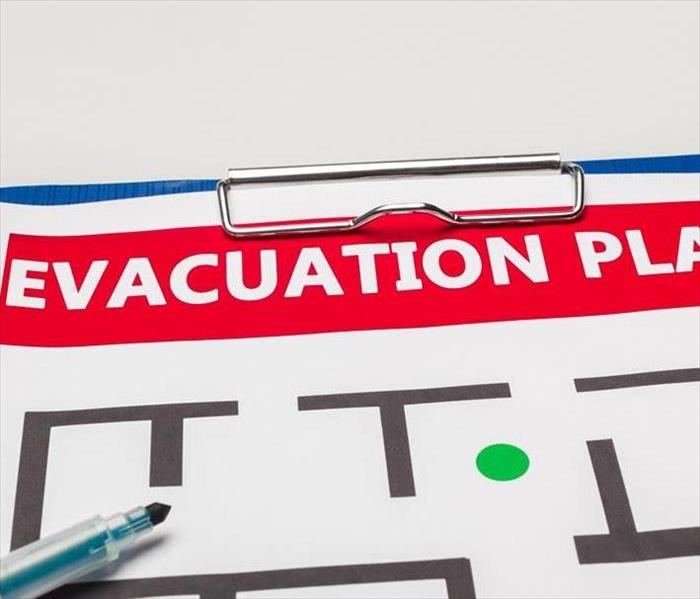 Have an emergency plan in place incase of a storm.
Have an emergency plan in place incase of a storm.
Hailstorms can be incredibly destructive, causing significant damage to your property. From shattered windows to dented roofs, the impact of hail can be devastating. However, there are proactive measures you can take to protect your property from hailstorm damage. In this blog post, we will discuss some practical tips to safeguard your property and minimize the risk of hailstorm damage.
Stay Informed
One of the most effective ways to protect your property from a hailstorm is to stay informed about weather conditions. Pay attention to weather forecasts and warnings, especially during hailstorm seasons. Keep a reliable source of weather information handy, such as a weather app, to receive real-time updates. This will enable you to take timely action to protect your property.
Windows and doors are vulnerable to hailstorm damage. Consider installing impact-resistant windows and reinforced doors as they are designed to withstand the impact of hailstones. If replacing windows and doors is not an option, protect them with storm shutters or window film. These measures will provide an added layer of protection against hail damage.
Maintain Roof and Gutters
A well-maintained roof and gutters can help protect your property during a hailstorm. Regularly inspect your roof for loose or damaged shingles. Replace any missing or broken shingles promptly to maintain the integrity of your roof. Clean your gutters and downspouts to ensure proper drainage. Clogged gutters can overflow during a storm, leading to water backup and potential damage to your property.
Reinforcing your roof can provide added protection against hailstorm damage. Consider installing impact-resistant roofing materials, such as metal or asphalt shingles specifically designed to withstand hail. Reinforcing vulnerable areas, such as eaves and overhangs, can also minimize the risk of hail damage. Consult with roofing professionals to determine the best options for your property.
Trim Trees and secure Outdoors
Trees and branches can pose a significant risk during a hailstorm. Trim back overhanging branches and remove dead or weak trees near your property. This will reduce the chances of branches breaking off and causing damage to your property during a storm. Regular maintenance of trees and landscaping can help minimize potential hazards during severe weather conditions.
Outdoor items, such as patio furniture, grills, and garden tools, can become projectiles during a hailstorm. Secure or bring these items indoors before a storm approaches. Move vehicles into a garage or carport if possible. Protecting these belongings will prevent them from being damaged or causing additional damage to your property.
Install Hail Protection Systems
Consider investing in hail protection systems to safeguard your property. Hail guards, heavy-duty hail nets, or hail protection blankets can be installed over vulnerable areas, such as skylights, solar panels, or outdoor structures. These systems provide an extra layer of defense against hail damage by reducing the impact and preventing direct contact with vulnerable surfaces.
Regularly review your insurance policy to ensure you have adequate coverage for hailstorm damage. Understand the terms and conditions, including deductibles and coverage limits. If you live in an area prone to hailstorms, consider adding additional coverage specific to hail damage. Consult with your insurance provider to discuss your options and make any necessary adjustments to your policy.
Create an Emergency Plan
Having an emergency plan in place can help you react quickly and protect your property during a hailstorm. Identify a safe area within your property, such as a basement or an interior room on the lowest level, where you can take shelter during a severe storm. Prepare an emergency kit with essential supplies, including flashlights, batteries, first aid supplies, and a portable weather radio. Protecting your property from hailstorm damage requires proactive measures and preparedness. By implementing these strategies, you can significantly minimize the risk of hailstorm damage and protect your property effectively.
Sump Pump Maintenance: Essential Tips for Reliable Performance
6/20/2023 (Permalink)
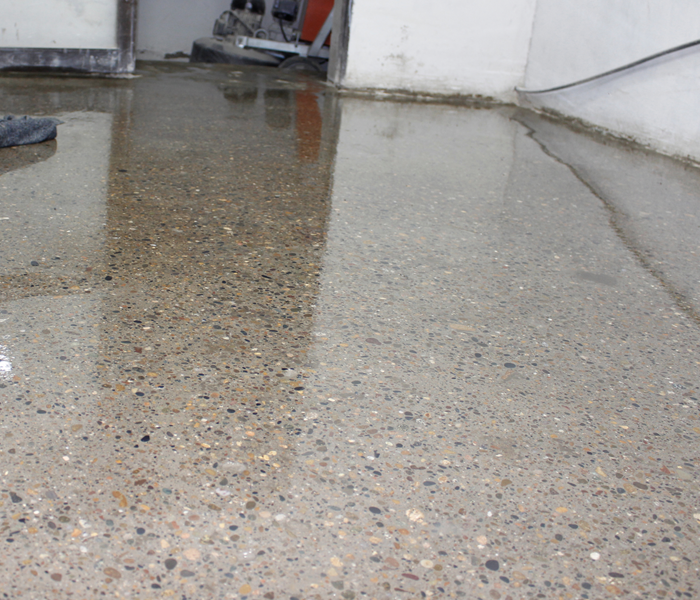 Testing your sump pump regularly to help reduce malfunction when needed.
Testing your sump pump regularly to help reduce malfunction when needed.
A sump pump is a critical component of many homes, helping to prevent water damage by efficiently removing excess water from basements and crawl spaces. To ensure its optimal performance when you need it most, regular maintenance is key. In this blog, we'll explore essential tips for maintaining your sump pump, safeguarding your home from potential water-related issues and promoting peace of mind.
Test Your Sump Pump Regularly
Test your sump pump by pouring water into the sump pit to activate the pump. Ensure that it starts automatically, pumps out the water, and shuts off without any issues. This test verifies that the pump is functioning correctly. To prepare for power outages, unplug your sump pump and simulate a power loss by lifting the float or disconnecting the float switch. Confirm that the backup system (if you have one) engages and operates as expected.
Clean and Maintain the Sump Pit
Regularly inspect and clean the sump pit, removing any debris, dirt, or sediment that may accumulate. This helps prevent clogs and ensures smooth pump operation. Ensure the float is unobstructed and moves freely. Clean or replace the float switch if it appears damaged or worn out.
Test and Maintain the Discharge Line
Regularly check the discharge line for any blockages or obstructions. Remove debris, dirt, or ice buildup that may impede the flow of water away from your home. Direct the discharge line away from the foundation of your home to prevent water from recirculating into the sump pit. Ensure it slopes away from the house to promote proper drainage.
Inspect Check Valves and Backup Systems
Check valves prevent water from flowing back into the sump pit once the pump turns off. Ensure the check valve is properly installed and functioning correctly. If you have a battery-powered backup sump pump or a secondary backup system, test and maintain them according to the manufacturer's instructions. This ensures their readiness during power outages or primary pump failures.
Keep an Eye on Pump Motor and Alarm
Regularly inspect the pump motor for any signs of damage, unusual noises, or overheating. Contact a professional if you notice any issues that require attention. If your sump pump has an alarm system, test it periodically to ensure it functions properly. Clean or replace the batteries as needed.
Consult Professional Services
Consider scheduling professional maintenance for your sump pump. A qualified technician can perform a thorough inspection, clean components, and address any potential concerns. If you encounter persistent issues with your sump pump or require repairs, it's best to consult a professional to ensure proper resolution and optimal performance.
Maintaining a sump pump is crucial for its reliable operation and your home's protection against water damage. By regularly testing, cleaning, and maintaining the sump pit, discharge line, check valves, backup systems, pump motor, and alarm, you can ensure that your sump pump is ready to handle excess water effectively. Remember, professional assistance is available for more comprehensive servicing or troubleshooting. By prioritizing sump pump maintenance, you can enjoy a secure and water-free environment in your home.
How to Prepare for a Hurricane
2/12/2023 (Permalink)
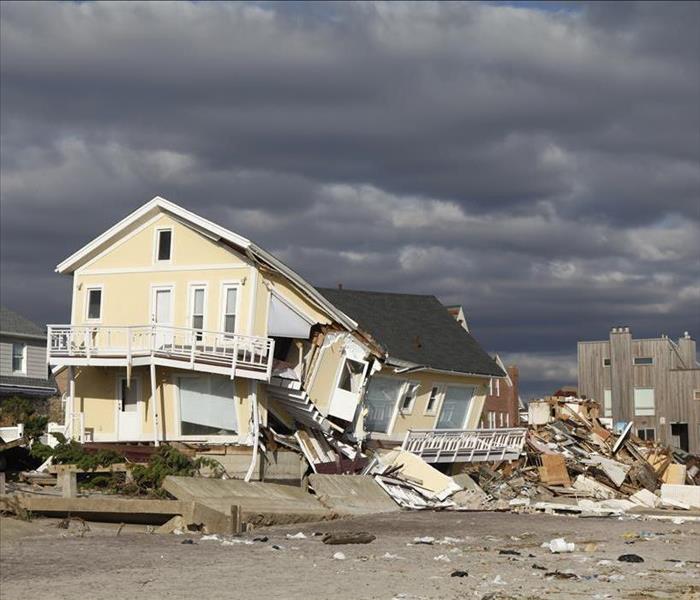 Louisiana has seen over 50 hurricanes since the 1930s. This is how you prepare your home and family for a hurricane.
Louisiana has seen over 50 hurricanes since the 1930s. This is how you prepare your home and family for a hurricane.
Hurricanes are very powerful, destructive storms that can bring high winds and heavy rainfall. Hurricanes form in the Atlantic Ocean, Caribbean Sea, or Gulf of Mexico and then move toward land. In the United States, hurricanes are most likely to hit Florida, Louisiana, and Texas. In fact, Louisiana has seen over 50 hurricanes since the 1930s. This is how you prepare your home and family for a hurricane.
What is the difference between a hurricane watch and a hurricane warning?
A hurricane watch means a hurricane is possible in the next 48 hours. In these cases, you should be prepared to either shelter in place or evacuate, but it is very possible that the storm will die down before it reaches you.
A warning means that a hurricane is expected in the next 24 hours. Hurricane warnings are issued by the National Weather Service and they signal that immediate action needs to be taken in order to protect yourself and your family.
Be prepared before the storm
To be prepared for a hurricane, you should:
- Keep a list of emergency phone numbers nearby.
- Have a plan for where to go if you have to evacuate.
- Have an evacuation kit ready to go with everything from food, water, and any medications.
Pack emergency supplies
One of the most important steps to take in preparation for a storm is to pack an emergency kit. You can store your emergency kit in a backpack or plastic storage bin, but be sure it's watertight and easy to carry if you need to evacuate.
Pack supplies for at least two weeks—and don't forget about pets! Keep enough food, water, and medicine on hand so that everyone in your household for at least 72 hours.
Remember to store your emergency kit in an easy-to-access location!
Know evacuation routes and have a plan for evacuation
Prepare for the need to evacuate the area. The best way to ensure that you can evacuate quickly is to know the route you'll take and how long it will take. If you are in a coastal area, have a plan for where you will go if the storm requires an evacuation.
Prepare your car
Most people's form of evacuation relies on their vehicles. Before the hurricane, it is important to prepare your car.
- Make sure you have a full tank of gas.
- Have a spare tire and jack.
- Have a cell phone charger in your car.
- Keep an emergency kit in your car.
- Move your car into a garage or under cover.
Prepare to shelter in place
In some cases, it might not be safer to shelter in place than it is to evacuate. Hurricanes are extremely dangerous for everyone, but especially for those who venture outdoors. If you need to shelter in place, remember to stay away from windows and doors and stay away from trees, power lines, and flood waters.
Prepare your home
To minimize the risks of damage to your home during a hurricane, there are several things you can do to prepare your home.
- Shut off utilities such as electricity, gas, and water.
- Remove trees limbs and other debris from your yard that could cause damage to your home.
- Make sure your home is secure and ready for flooding if necessary: cover windows and doors, place sandbags in front of entry points to your home, and make sure outdoor furniture has been moved somewhere safe.
The best way to keep your family and home safe from a hurricane is to be prepared. If you do not have an emergency plan in place already, it is important that you create one before the next hurricane unexpectedly hits. Remember, if your home or business suffers from damage due to a hurricane, our SERVPRO of Lafayette team can help with all the flood damage cleanup and restoration.
3 Ways To Prepare Your Home for a Storm
6/18/2022 (Permalink)
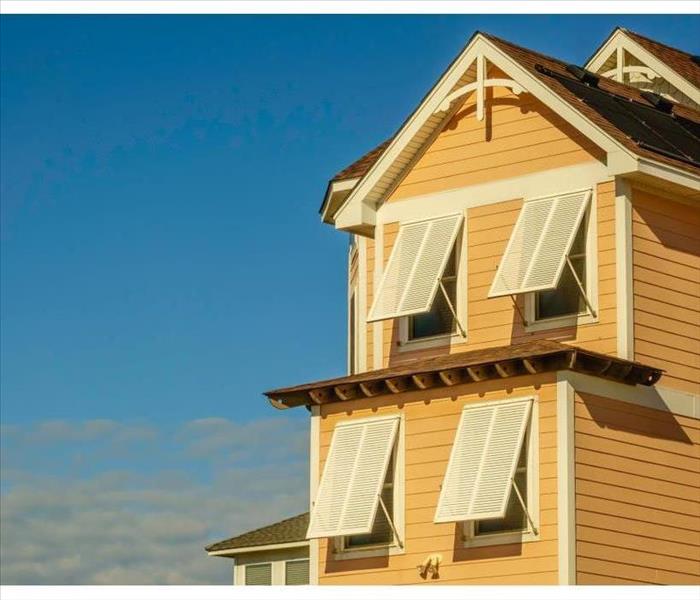 By installing shutters you prevent your windows from getting broken and letting the weather inside.
By installing shutters you prevent your windows from getting broken and letting the weather inside.
Three Steps to Storm-Proofing Your House
Whether it's a blizzard in the middle of winter or a mid to late summer hurricane, you never want to be caught unaware. When you leave your home unprotected, you leave your family's safety up to chance. Here are three ways to prepare your home for a storm and keep your family safe.
1. Clean Landscaping
Even small branches can become projectiles in a powerful storm. To best protect your home, remove all dead or dying tree limbs. Cut back any trees that hang over your home or any power lines. If a limb were to break off during a storm, it could do considerable damage to your home and cause you to lose power.
Additionally, ensure that your gutters and storm drains are clean and free from debris. A blocked storm drain could mean that your Lafayette, LA, home could quickly become overrun with flood water and turn into a flooded building.
2. Install Shutters
If even one of your windows breaks in a storm, you could find yourself in trouble. Install sturdy shutters on all of your windows to prevent them from getting broken and letting the weather inside. Steady rain coming through a broken window could cause a tremendous amount of water damage in a short period. Furthermore, if the flood water is high enough, a broken window will let the water into the house. If a flood makes its way inside, you'll need to call storm damage repair specialists to handle the clean-up.
3. Stop Flood Water From Entering
Before a big storm hits, evaluate your home and identify potential risks. Install a sump pump to control the water if you have a frequently flooded crawl space. If you have cracks or breaks in your foundation, contact a specialist to have them repaired. It can also be helpful to grade your lawn away from your home, so the floods have a more difficult time reaching the house.
Storms can be stressful, but taking the time to protect your home before one hits can help take a weight off your shoulders.
Know the Different Types of Water Damage
6/3/2022 (Permalink)
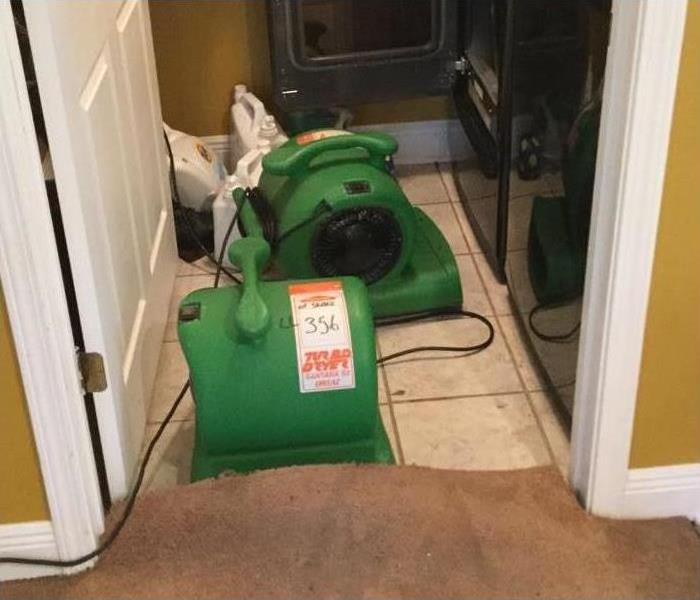 Laundry room washer leak.
Laundry room washer leak.
Whether heavy rains or a leaking pipe, water damage to your Lafayette, LA, home requires swift action. The longer it sits, the more potential there is for additional damage, such as mold growth. At the first signs of water is easy to want to grab whatever is on hand to start the cleanup. Before doing that is vital to understand the type of water you are dealing with.
Flood Damage Categories
There are three categories of water damage, all of which come from different sources.
Category 1: Considered clean water, the source could be a burst pipe or sink overflowing. This water has no contaminants, making it safe for people to handle.
Category 2: Referred to as gray water, it often has chemicals, biological contaminants, or microorganisms. Sources for sustaining this damage include dishwasher overflow, water from condensation, or sump pump failure.
Category 3: This is the dreaded black water that comes from flooding and often has sewage, toxins, chemicals, and other substances that are best left untouched. Along with sewage backups, floodwaters, and rising groundwater, gray water not properly taken care of may become this type of damage.
Proper Restoration
Any water left unchecked has the potential to cause more issues, even clean water. When it is classified as the other two categories, calling a professional storm damage restoration company is often the best choice. Dealing with contaminated water requires assessing the extent of the damage, developing a plan of action, and then cleaning and repairing the damage using industrial-grade equipment and professional methods.
While any type of water damage your home sustains is a negative situation, the type of water causing the issue should also be a top concern. Verifying the source of the intrusion helps ensure the right measures are taken for proper cleanup.
6 Ways To Maintain Your Sump Pump
5/30/2022 (Permalink)
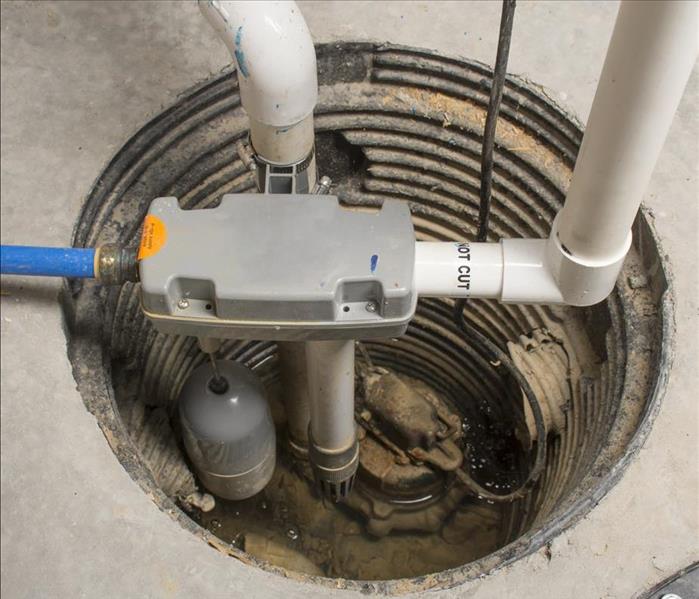 Make a point to check your sump pump often.
Make a point to check your sump pump often.
Sump Pump Maintenance
Your sump pump is something you probably don't think about often. However, you will surely remember this essential piece of equipment if a bunch of water invades your Lafayette, LA, home's lowest floor. It's vital to frequently maintain your pump to ensure it's there when you need it most.
1. Inspect the Drain Pipes for Blockages
Your drain lines must remain clear for the pump to work to its fullest potential. Check them regularly by pouring hot water down the pipe from upstairs. The water will flow fast down the line into your sewer or lawn if it is clear.
2. Look for Leaking Oil
Discovering oil on the pump can be a sign of an oil leak. A leak would mean repairing, or possibly even replacing, the pump.
3. Check for Leaks in the Basin
You also need to check the basin to check for leaks or cracks. A leaky basin can result in damage necessitating work by water damage restoration experts. Look for potential leaks by removing everything from the pit and filling it with water.
4. Test the Sump Pump Alarm and Battery Regularly
The alarm is essential, as it notifies you of issues. Ensure that you can hear it from any area of your home. In addition to testing the alarm, test the backup battery. Unplug the pump from its power outlet and fill the basin with water. The backup battery is working correctly if the pump starts instantly.
5. Test the Electrical Components for Damage
Sump pumps use a significant amount of electricity, which can sometimes trip a circuit breaker. Avoid electrical problems by inspecting the power cord and outlet to ensure they are undamaged.
6. Check the Check Valve for Issues
The check valve is one of the most essential parts to inspect during pump maintenance. It is a component that commonly fails.
Make a point to check your sump pump often. This preventative action could mean the difference between incurring extensive water damage during a flood and no loss.
3 Essential Tips To Protect Your Business From Storm Damage
4/23/2022 (Permalink)
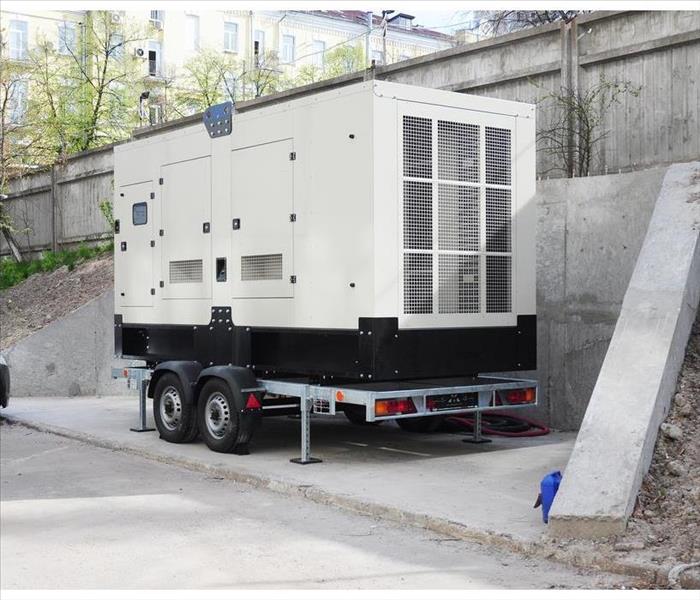 Invest in a generator.
Invest in a generator.
Be Ready When Disaster Strikes
A torrential rainstorm can have major negative impacts on your business if you're not prepared. Damaging high winds, floodwaters and long-term power outages can all result in extra expenses you may not have budgeted for. Thinking ahead can help you be ready when disaster strikes. Here are three tips to help you protect your business.
1. Invest in a Generator
If a thunderstorm in Lafayette, LA, knocks out your power, a generator can help you keep your business running, or at least prevent the loss of perishable items. You'll also be able to better protect your employees by keeping lights on and heat pumping if needed. Having power helps you maintain your ability to communicate with customers and staff so you experience fewer service interruptions and can keep everyone informed of your plans.
2. Communicate With Staff
Before a rainstorm rolls in, be sure to discuss your plans and expectations with your staff. They should know what to do in the event that you lose power or major damage is done to the building. Discuss what they should do if customers are in the building to keep everyone safe. Determine appropriate exit routes and where people should take shelter if the need arises.
3. Maintain Your Building
Proper building and landscape maintenance are key to keeping your business safe in a storm. Be sure to keep branches trimmed and away from windows. Perform regular safety checks on your building's perimeter and don't wait to fix any issues you discover. Investing in building safety can pay off in the long run when you don't have to deal with major damages once the storm has passed. If you do experience harm to your building, be sure to reach out for professional commercial building restoration services.
When a rainstorm rolls in, you want to make sure your employees and your assets remain safe. Follow these tips to help you be prepared in the event that Mother Nature upsets your bottom line.
Top Alternatives to Using Sandbags
4/5/2022 (Permalink)
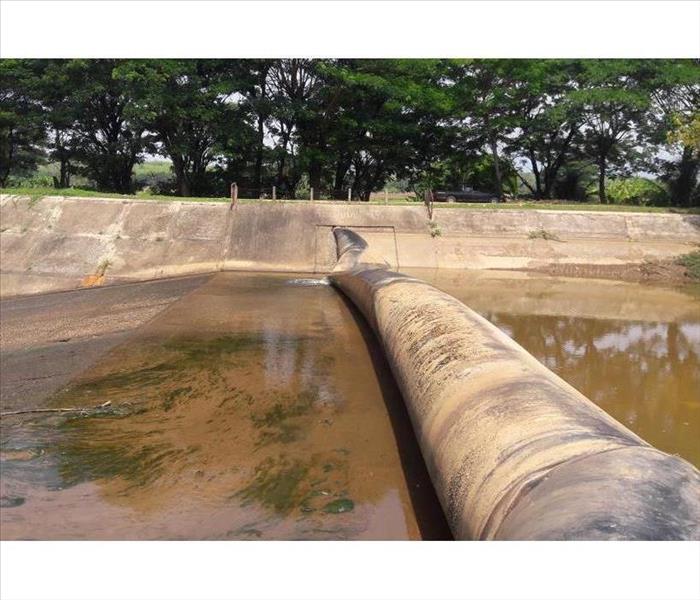 Inflatable flood dams are interesting because they use water to prevent flooding.
Inflatable flood dams are interesting because they use water to prevent flooding.
When you expect a flood in Lafayette, LA, you might automatically think of using a sand bag to stop floodwaters from creeping into your business. This might not be your best solution, but there are plenty of alternatives.
Why Seek an Alternative?
Sandbags have many issues when it comes to preventing water from creeping in and the need for water damage remediation. Some of these issues are:
- Weight
- Difficulty storing
- May become environmental hazards
When you use them for flood prevention, storage, setup and disposal are all cumbersome. They also are not the best way to prevent flood damage.
Transportable Flood Fence
These barriers keep the water out by encircling whatever you need to be protected. You can encircle your entire business if you need to. They are harder to prepare than the more traditional sand bag. Unfortunately, this solution is not practical if you have a small area like a doorway or your business is part of a strip complex. They also can be fairly costly.
Poly Tube Flood Barriers
These work on a similar concept as sandbags do. They consist of a long tube that can be filled with any heavy substance, including sand. You then stretch the tube across something as small as a doorway or as large as a bay door. This is a type of dam that can be lengthened or shortened to suit your needs. You just fill it as high as you need it and then put it into place. The only problem comes in when it is at full length. It can be difficult to move on your own.
Inflatable Dams
Inflatable flood dams are interesting because they use water to prevent flooding. You lay it out and fill it up. Unfortunately, this type can be cost-prohibitive if you are trying to cover a large area. Still, if you have a large area that floods frequently, it might just be worth it.
Consider these solutions to protect yourself. You don't need the hassle of filling a sandbag to prevent floodwaters from entering your business.
Storm Preparation: Steps To Take To Protect Your Home From Storm Damage
1/10/2022 (Permalink)
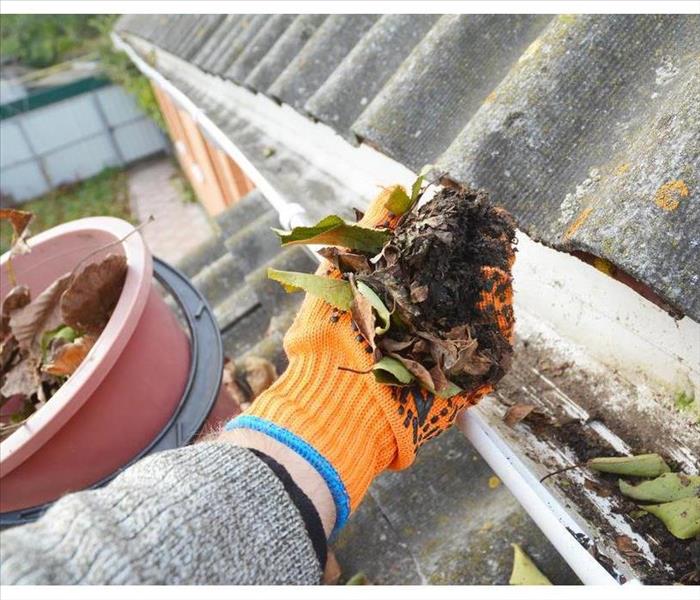 Keep your gutters clean.
Keep your gutters clean.
Protect Your Home From Flooding
With storm season well under way, you need to take active measures to protect your home from flooding and storm damage, if you have not already done so. Depending on where you live, preparation measures may look slightly different. That said, there are certain measures that all homeowners across the country can take to reduce their risk of excessive damage and the need for costly repairs. Those include the following:
- Clean out the gutters.
- Trim trees and overhanging branches.
- Install a sump pump.
- Install storm shutters.
- Invest in a generator.
- Invest in flood damage insurance.
- Prepare an emergency preparedness kit.
By doing each of the above, you can protect both your home and yourself in the event of a bad storm.
There Are Some Storms For Which You Just Cannot Prepare
By taking many of the above measures, such as cleaning out your gutters, trimming branches that overhang your home and installing storm shutters, you can keep the worst of wind, rain, snow and hail damage at bay. However, there are some types of damage, such as flooding, that you cannot fully protect against. Though sump pumps and other anti-flood measures help to an extent, they're not always 100 percent effective. If your home does flood, you want to act as soon as possible to prevent further damage. Some things you can do include the following:
- Elevate any furniture in the affected area.
- Turn off power to the affected area.
- Remove any valuables from the affected area.
- Take pictures of the damage and contact your insurance company.
- Reach out to your Lafayette, LA, flood damage remediation team for immediate assistance.
A restoration team can help dry out your home, clean your household items and perform mold remediation, if necessary. It is important that you contact your flooding team ASAP, as the longer you wait to remediate the damage, the worse the secondary damage, such as mold and rot, will become.





 24/7 Emergency Service
24/7 Emergency Service








